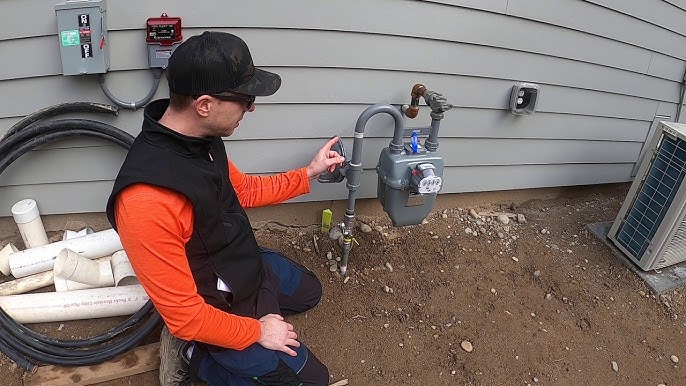
Natural gas is an essential energy source for homes, businesses, and industries worldwide. We cannot overstate the role of natural gas meters and regulators in ensuring their safe and efficient use. These devices measure and control gas flows, making them vital components of any gas distribution system.
What Are Natural Gas Meters?
Gas meters are devices designed to measure the amount of natural gas a property consumes. They are crucial for accurate billing and monitoring. Install gas meters at the point where the gas supply enters a home or building. These devices ensure that gas usage is tracked with precision.
Types of Gas Meters
Several types of gas meters exist, including:
- Diaphragm Meters: Common in residential applications, these use a flexible diaphragm to measure gas flow.
- Rotary Meters: Used in industrial settings, these are more robust and suitable for higher gas flows.
- Turbine Meters: Ideal for high-pressure systems, these measure gas flow using spinning blades.
- Ultrasonic Meters: Advanced meters that use sound waves to measure gas consumption with high accuracy.
Each type of meter is selected based on the needs of the property, ensuring efficiency and reliability.
The Role of Gas Pressure Regulators
While gas meters measure consumption, pressure regulators control the flow of natural gas. Natural gas is typically transported through pipelines at high pressure. However, such high pressure is not suitable for most appliances or systems. This is where gas regulators come in.
How Do Gas Regulators Work?
Gas regulators reduce high-pressure gas to a lower, safer pressure suitable for use. They maintain consistent pressure levels, ensuring that appliances function correctly and safely. The regulator adjusts to changes in gas flow demand, keeping the system stable.
Types of Natural Gas Regulators
There are various types of natural gas regulators, each serving a specific purpose:
- Single-Stage Regulators: These reduce gas pressure in one step and are used in smaller applications.
- Two-Stage Regulators: Commonly used in industrial systems, they lower pressure in two steps for greater accuracy.
- High-Pressure Regulators: These are designed to handle gas flows at elevated pressures, often found in industrial or commercial settings.
The choice of regulator depends on factors such as pressure requirements, flow rate, and the type of application.
Why Are Natural Gas Meters and Regulators Important?
The combination of natural gas meters and regulators ensures that natural gas systems operate efficiently and safely. Without these devices, measuring gas usage accurately or controlling pressure levels effectively poses a challenge.
Key Benefits
- Safety: Regulators prevent dangerous pressure spikes that could damage appliances or cause accidents.
- Accuracy: Gas meters ensure fair billing by providing precise consumption data.
- Efficiency: Proper pressure control improves the performance of appliances and reduces energy waste.
How to Maintain Gas Meters and Regulators
Regular maintenance is essential to keep gas meters and regulators functioning optimally. Here are some tips:
- Inspect for Damage: Check for visible wear or leaks.
- Schedule Professional Inspections: Licensed technicians can test and calibrate devices to ensure accuracy.
- Replace Old Equipment: Outdated meters and regulators should be upgraded to meet modern safety standards.
- Keep the Area Clear: Ensure that the gas meter and regulator are accessible and free from obstructions.
Future Innovations in Gas Flow Technology
Advances in technology are improving the way gas systems operate. Modern gas meters now feature smart capabilities, allowing users to monitor usage in real-time through mobile apps. Similarly, next-generation pressure regulators are designed for greater efficiency and adaptability.
These innovations not only enhance safety and accuracy but also contribute to energy conservation and cost savings.
Conclusion
Natural gas meters and regulators are indispensable components of any gas distribution system. They ensure the safe, accurate, and efficient use of natural gas, protecting both consumers and the environment. Whether in residential, commercial, or industrial applications, these devices play a critical role in modern energy systems.
FAQs About Natural Gas Meters and Regulators
1. What is a natural gas meter?
A natural gas meter is a device used to measure the volume of natural gas consumed by a property, ensuring accurate billing and monitoring.
2. Why is a gas regulator necessary?
A gas regulator reduces the high-pressure gas from the pipeline to a safer, usable pressure level suitable for appliances. It also ensures consistent pressure for optimal performance.
3. What are the common types of gas meters?
The most common types include diaphragm meters, rotary meters, turbine meters, and ultrasonic meters, each suited to different applications.
4. How do pressure regulators work?
Pressure regulators adjust the flow of natural gas to maintain a consistent and safe pressure level, ensuring the gas is delivered efficiently to appliances.
5. What happens if a gas regulator fails?
A malfunctioning gas regulator can cause gas pressure to become too high or too low, potentially damaging appliances or leading to unsafe conditions.
6. How often should gas meters and regulators be inspected?
Professional inspections are recommended annually or whenever there are signs of wear, damage, or performance issues.
7. Can natural gas meters be tampered with?
Tampering with gas meters is illegal and dangerous. It can lead to inaccurate readings, gas leaks, or safety hazards.
8. What are smart gas meters?
Smart gas meters are advanced devices that allow users to monitor their gas usage in real-time, often through mobile apps or online portals.
9. Are high-pressure regulators used in residential settings?
Industries and commercial settings typically use high-pressure regulators. Residential systems generally use low or medium-pressure regulators.
10. How can I tell if my gas meter or regulator needs replacement?
Signs include inconsistent gas flow, visible damage, outdated models, or increased energy bills without increased usage. Consult a professional to assess the situation.